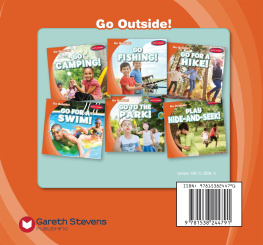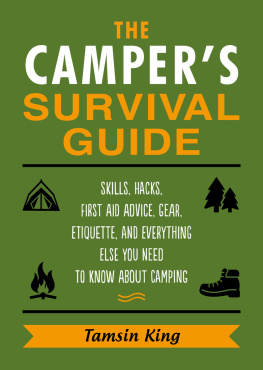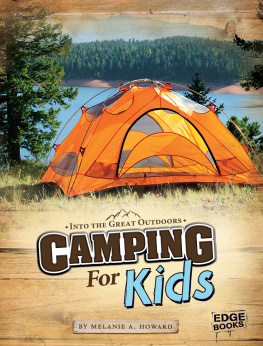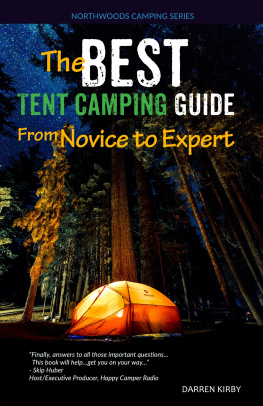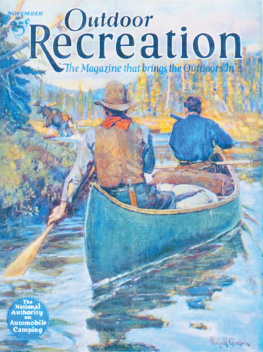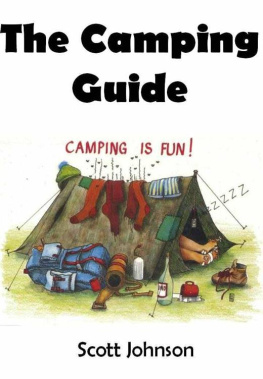

Contents
Preface to the Revised Edition
T he big story of the last decade in the winter wilds is the explosive growth of backcountry skiing. More and more people are heading to the mountains, lured by the promise of fun and adventure in the back of beyond.
Out There, there are no lift tickets, no chairlifts, no crowds, and no out of bounds. Out There, its just you, your friends, and the pure, untracked snow. Whether you are embarking for the day or a multi-day tour, or you are setting up a base camp from which to explore, backcountry skiing provides unparalleled access to the freedom of the hills.
No wonder backcountry skiing is the fastest growing segment of the winter sports industry. This was a sideline for major ski, boot, and binding manufacturers until recently; today, however, many of the larger companies offer fully integrated lines of alpine touring equipment including skis, boots, bindings, and climbing skins. Backcountry accessories such as beacons, probes, poles, and shovels have seen sales go through the roof as well.
And its not just backcountry skiers. Other user groups are flocking to the winter wilds too, and snowshoers and snowmobilers are fleeing to the hills in ever-increasing numbers as well.
But as the number of backcountry users continues to surge, its leading to a sharp increase in the amount of skiers, snowshoers, and snowmobilers exposed to avalanche danger. Over the last 10 years, an average of 27 people died in avalanches each winter in the United States. Most of these deaths could have been avoided if the victims had had better knowledge and awarenessnot just of snow science but terrain selection and human factors as well (indeed, with the increased use of the winter backcountry, you are frequently put at risk by other groups of people above you that you may not even be aware of).
All winter backcountry travelers should have a solid quiver of skills, including planning, decision making, acquiring the right clothing and gear, traveling in avalanche terrain, first aid, and overnightingwhether accidentally or by design.
For 25 years, this book has provided tens of thousands of readers with exactly those skills. So here it comes again, completely updated to reflect the changes in the ways we enjoy the winter wilds while still providing the same essential information you need to enjoy winter wilderness travel and adventure in comfort and safety.
So read it, be safe, have fun, and get Out There!
Introduction
I awoke in the dark to the sound of wind rushing through the pass. The tent shook and the fly snappedbut as I lay still in my sleeping bag, I could hear something else: the whisper of falling snowflakes brushing the fabric of the tent.
Quietly, I pulled on my boots and parka, taking care not to wake my companions, and stepped into the swirling storm. The snow was coming down hard. It filled the snowshoe tracks from the night before and wiped away all trace of last nights fire. As the birches and balsams shook and the snow whipped the air, I enjoyed a peaceful, almost euphoric, moment until I could stand it no longer: HEY YOU GUYS, WAKE UP! ITS SNOWING!
Just for good measure, I pelted the tent with snowballs and then dashed to the trees for kindling and firewood.
This is winter camping: the splendid forest scenery, the grace of falling snow, and the companionship of friends. These have a way of making you feel like a kid again. Who doesnt have cherished memories of being snowed inthe unexpected gift of a day away from work or school? Who isnt gripped by a sense of adventure when snow forces a change of plan?
Winter camping is like being snowed in. It makes us free from schedules and demands. It offers an opportunity to be self-reliant, to feel the deep satisfaction of a snug shelter or a warm fire. It gives us the chance to slow down, renew old friendships, and enjoy life again.

Golf carts buried in snow: I guess its time to hang up the clubs and grab the skis!

Winter camping may mean free heeling into the outback, as a telemarker does here in the Chic-Choc Mountains on the Gasp Peninsula in Quebec.
And winter camping provides a chance to playto slide down a steep slope on your skis and land in a snowy pile at the bottom, to dig snow caves and to build igloos, to bombard your friends with snowballs, to have fun.
And fun is what winter camping is really all about. As the Indians and Inuit of the far north demonstrate, life in the cold need not be all hardship and danger. Winter can be the favorite season, the time when frozen lakes, rivers, and snow-filled forests make perfect highways for fast and easy travel. Its the time when animals can be located more easily; its the bug-free season when the land seems strangely empty and silent.
Its also the time when the snow provides a slippery surface to send skis and sleds swiftly on their way, when the land is magically transformed from the drab grays and browns of late fall to sparkling blues and crisp whites.
Living indoor lives, shielded from the elements by our computer-age technology, warmed by fossil fuels and nuclear power, many of us now see winter as the enemy, something to be survived. We shake our heads in wonder at people who spend time outdoors in the cold and snow. Weve forgotten the pleasures of winter outings.
This book is dedicated to helping you discover the pleasures of snow camping and deals mostly with the fundamentals. It is designed to take you through the steps of planning, organizing, and conducting a trip on your own. As an introductory volume, the book is written for those who wish to explore the winter wilderness and experience the joys of winter travel in warmth, comfort, and safety.

Chapter 1
Wintering
H idden under the snowy forest canopy, locked beneath the ice of freshwater lakes and tucked away in the hollows of fallen trees, life in winter continues. Though the land looks still, the residents are going about their business. After all, here in the north, winter lasts half the year or more. Natural processes cant afford to hang fire for six or eight months. Theres too much to do.
All life in cold environments prepares carefully for the onset of winter. Essentially, animals use one of three strategies for wintering: migration, hibernation, and adaptation. Animals that migrate survive winter by fleeing to warmer climates. By escaping winter, they avoid its rigors altogether, but they pay a hefty price in terms of energy consumed, and success isnt guaranteed. Precious energy reserves may be depleted before the animal reaches its hoped-for destination.
Though migration as a wintering strategy appeals to many people, and mass human migrations occur every fall and spring, the cost is too high for most, and migration simply is not an option for everyone.
Some animals find a snug shelter, enter a state of reduced activity while maintaining their body temperatures above freezing, and hibernate. Yet because the animal must find a den where the temperature doesnt drop much below freezing, and the chance of finding such a safe haven diminishes the farther north it goes, hibernation as a strategy is rare among northern animals.
Next page







